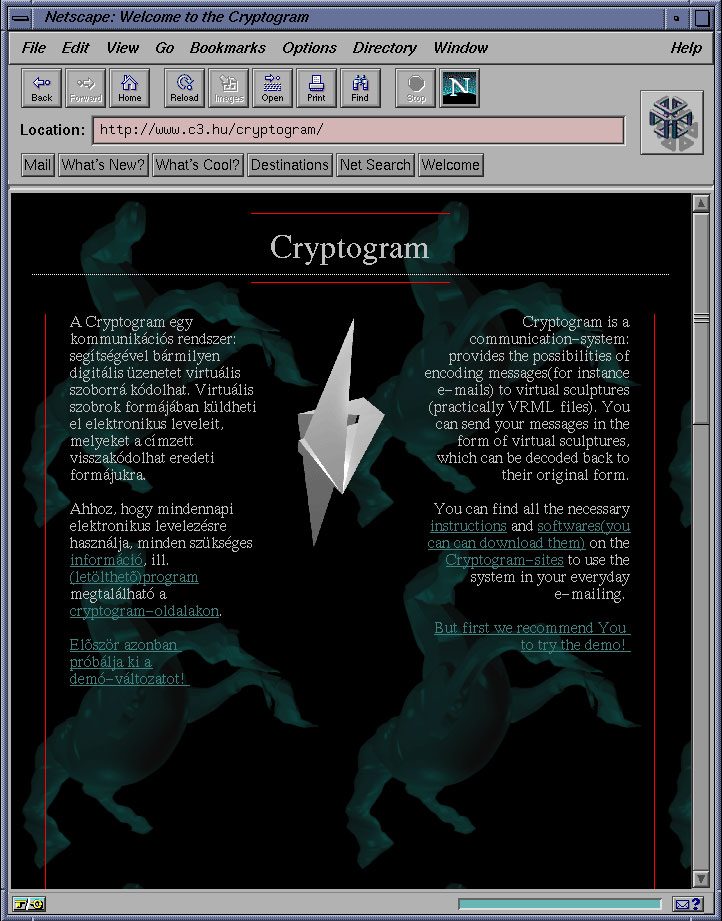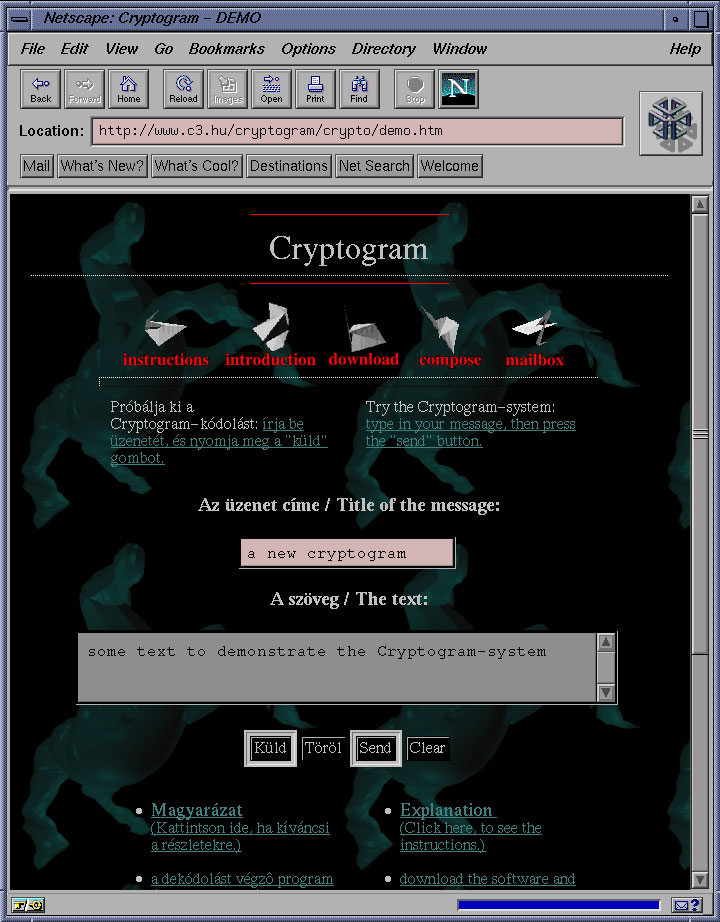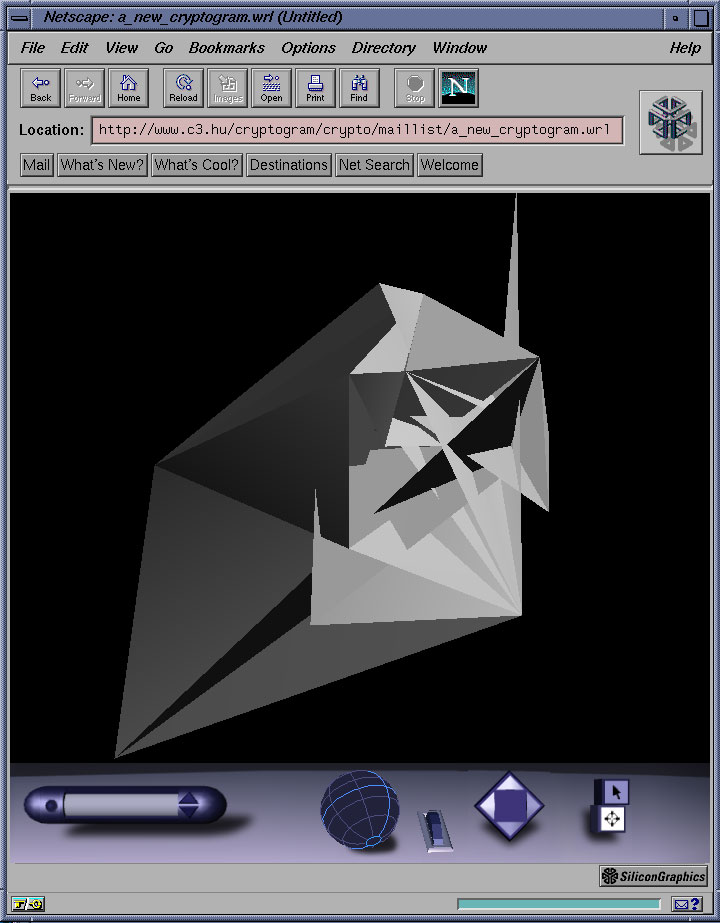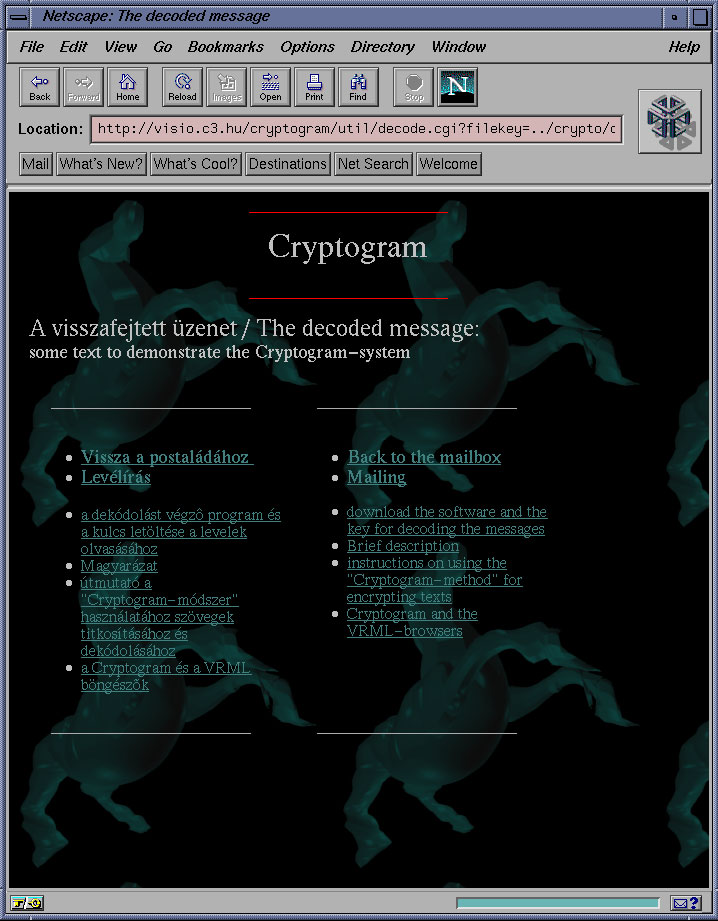|
Zoltán Szegedy-Maszák |
|
|
Related works: Variations on Steganography, Steganogram: Stereogram Cryptogram is an encrypted communications system, by which any text can be reversibly transformed into a virtual sculpture, and the encrypted message may be sent in this innocuous form to the addressed. The statues bearing the secret messages appear in the virtual space as free-standing sculptures in an illusory environment that seems realistic. One is able to observe them from every perspective, and upon touching them, the encrypted textual information can be decoded.
The home of the Cryptogram project is: http://www.c3.hu/cryptogram/
|
|
|
|
|
The project’s website contains downloadable programs by which internet users can send electronic mails in the form of Cryptogram sculptures. This option closely relates to the 1990s’ electronic freedom fights. For example, during the time I was working on Cryptogram, the internet publication of cryptographic code – i.e., rendering public any uncontrollable device to facilitate the protection of the private sphere – was judged, that is banned, on an equal footing with the export of arms in the USA’s practical application of the criminal law. Cryptogram was an art project that could go unpunished in our part of the world. Its programming details, however, making it possible for anyone to correspond via encrypted messages, are no longer relevant today, among other reasons, because their usage is rather complicated for our contemporary standards. Whereas the claim to retain the private sphere was the primary context of Cryptogram for the audiences of the 1990s, the audience of the future (and perhaps of the present) will deem the originally less obvious, secondary connotations more important. The other underlying idea within Cryptogram is less allied with a given epoch: it refers to the semantic layers of an artwork, quite explicitly to the iconological paradigm, its model for decoding meaning. In addition to encoding, Cryptogram also thematizes information camouflage, rendering the message unnoticeable, which is the method of steganography. It is based on the censor’ ignorance, for they are unable to see more in those strange, nonsensical virtual sculptures than a useless and innocent act of an artist playing. The term “innocent eye”, of an open-minded view of the world, was given currency by John Ruskin in the context of painting, in the mid-nineteenth century. In defence of Turner, he intended to prove that those criticizing Turner’s paintings were unable to observe the world unbiased and free of conventions. Thus, they considered them chaotic phantasmagorias having nothing to do with reality. This approach implies that the development of art is contingent upon overcoming tradition as a prejudice. A hundred years later, E. H. Gombrich argued that the innocent eye was but a myth and no unbiased vision existed, since the viewer, merely to be able to perceive the representation, has to find something in the image that corresponds to his/her expectations, i.e., preconceptions. The methods of disguising conveyed information are based on the very biased nature of human reception. Their success of camouflaging may be understood as a proof of Gombrich’s proposition. Cryptogram, alongside my series related to steganography, may be similarly conceived as a reference to the myth of the innocent eye, to the purposeful nature of vision, always implying a need for decoding and interpretation.
|
|
|



